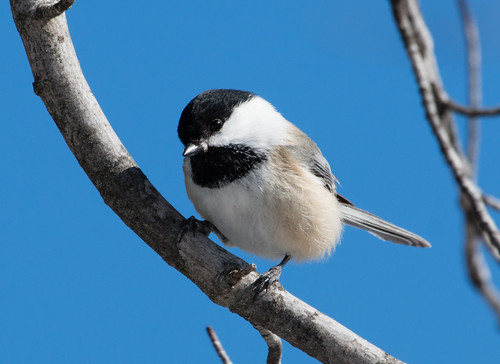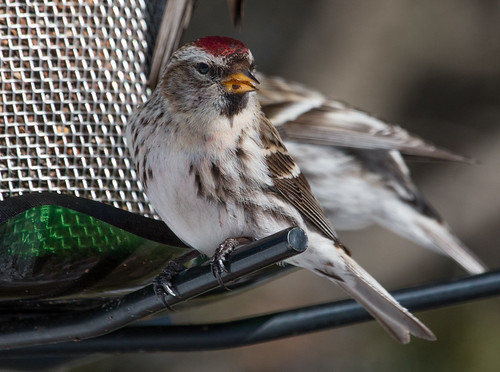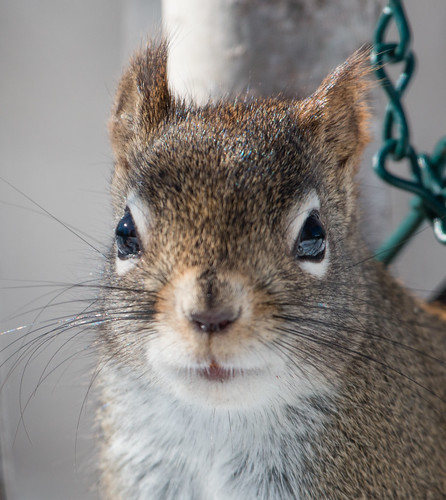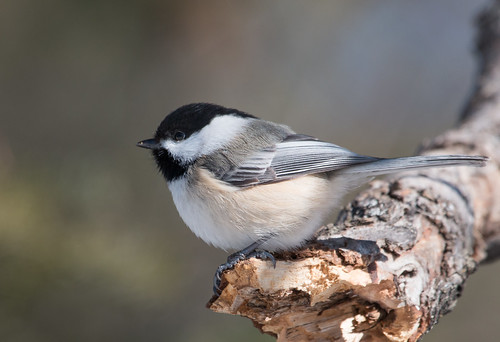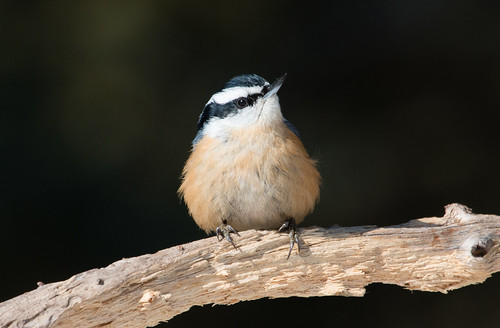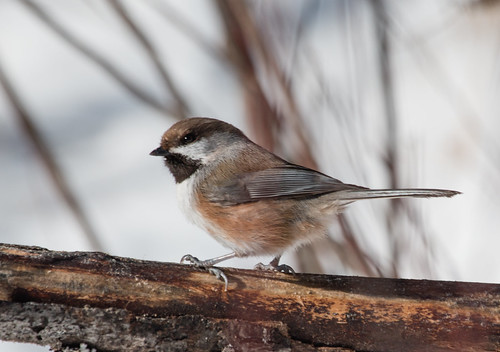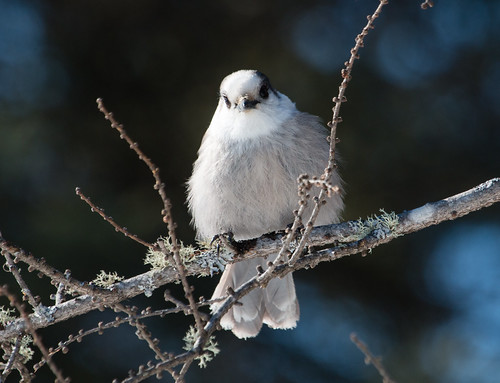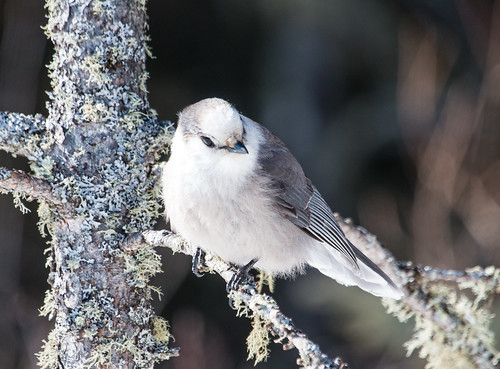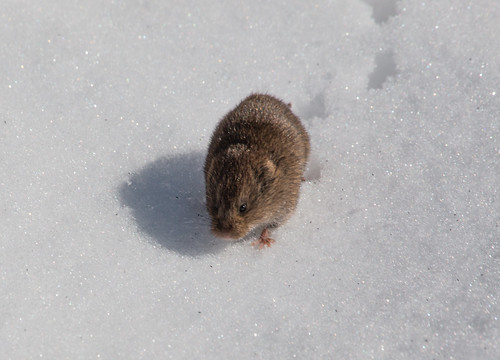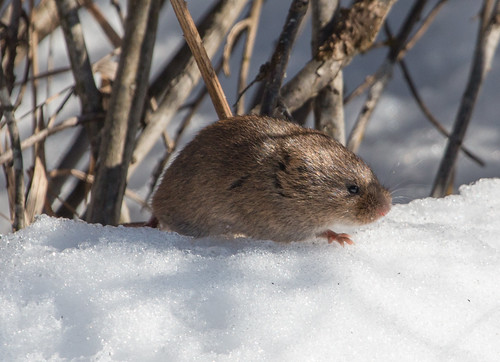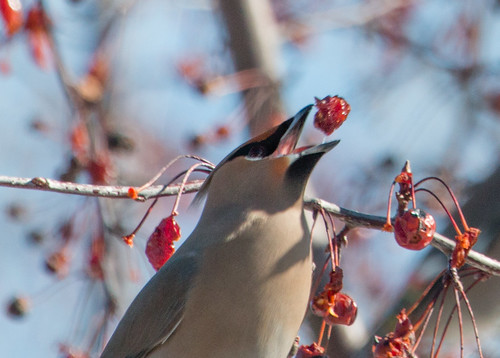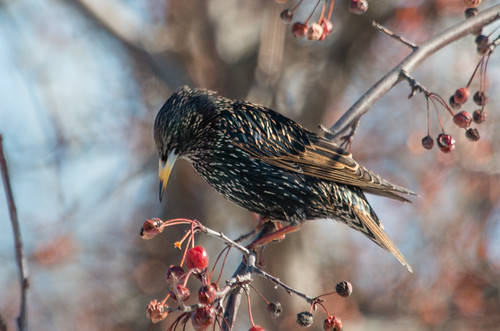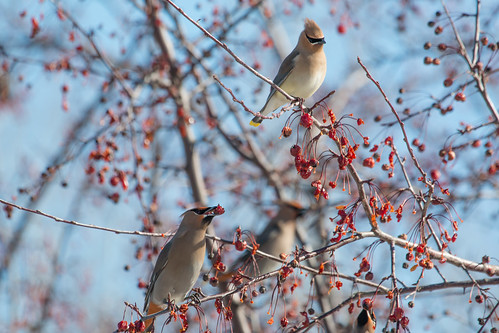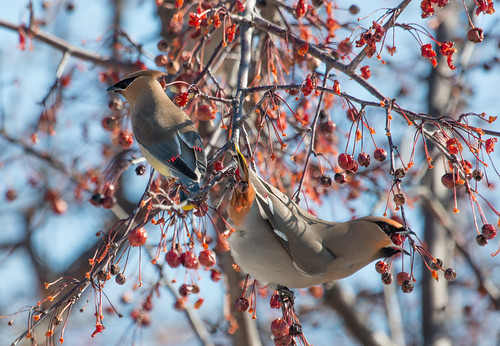 |
| John Richardson and Pip |
I’ve been focused on a couple of big writing projects right
now, keeping me stuck indoors, but I made plans to break out on Friday, and
headed to the Sax-Zim Bog with John Richardson. John’s been part of the
Minnesota birding community for quite a while now, but settled here, in my own
neighborhood of Duluth, just last fall, and I haven’t had a chance to get out
birding with him. He just started his own birding company,
Skylark Guiding Services,
and since my dog Pip’s webpage is called “
Such Larks, Pip!” after a line in
Great Expectations, well—it seemed obvious that I should take Pip birding with
a real Lark. And John, being the kind of easy-going birder I enjoy spending
time with, was perfectly cool with bringing along a dog.
John’s from the U.K., which explains his choice of a Sky Lark
for his professional identity—avian Sky Larks were introduced multiple times in
America but became established only in the area on and near Vancouver Island, and
have all pretty much died out now. They were introduced in Hawaii, too, where
they are established, and where I saw them in back in 2000. John is apparently
the first Sky Lark to become established in Minnesota.
I’ve had some pretty lousy luck with light when I’ve had
chances to get out birding in the bog lately, but John apparently brought the
sunshine.
Unfortunately, not all the weather gods were favorable—the wind
picked up right when I was trying to get a good recording of Boreal Chickadees singing.
They don’t have a whistled song as Black-capped Chickadees do, but do have a
cool “sub-song” that I very badly want to document. But my hearing is bad
enough on those high-pitched sounds without dealing with wind making them even
harder to hear in the first place, much less allow a clean recording. So that
goal in going to the bog didn’t work out.
We didn’t see any owls, either, but I wasn’t expecting that,
especially on a bright day. We got lots of nice birds nonetheless, starting
with a Ruffed Grouse eating buds in an aspen.
Grouse have an amazing digestive
system, with two offshoots where the large and small intestines meet, called
caeca. Those caeca grow enormously in
winter, because that’s where digestion of cellulose from those woody buds takes
place. The caeca shrink in spring when they switch to berries and buds.
Throughout the bog, we kept seeing redpoll
flocks, and there were quite a few at the feeders at the bog’s visitors center, along with the usual adorable red squirrels.
There weren’t all that many birds at the feeders, but the
ones there were wonderful. At the suet and peanut butter feeder on Admiral
Road, there were Black-capped Chickadees and Red-breasted Nuthatches, of
course, but also a couple of Boreal Chickadees...
... and six Gray Jays. Intriguingly,
one of those Gray Jays appears to be leucistic—the dark marking on the right
side of the head was very washed out. It was a gorgeous if strangely asymmetric
bird.
And speaking of corvids, there were ravens and crows all over the place. John is extraordinarily quick at identifying them from a distance, and actually accurate at it! The coolest thing was that the ravens were twitterpated. We saw one making cool swoops in the air while another, on the top branch of a snag, was watching. Then the flying bird alighted very, very close to the other. We also saw one carrying a big, rectangular white thing that looked at first glance like a piece of white bread but turned out to be a big piece of birch bark. Must be nest-building time!
Right when we decided it was time to return to Duluth, John
spotted a tiny thing running on the road—a meadow vole! This one stayed out in
the open a shocking amount of time, running across the road and ducking into
snow piles only to come out again—something must have disturbed it in its
burrow and it was searching for a new hideout. John was as excited as I was to
watch and photograph it—birding with a kindred spirit is always special.
We had such satisfying fare throughout the day, and the vole
at the end was like the pièce de résistance, so we headed home pleased with how
everything went. But no sooner had we arrived in our own neighborhood in Duluth
than we came upon a bustling flock of Bohemian Waxwings devouring berries at a
couple of fruit trees on Glenwood Street and flying across the road to digest
their meals in the sunny branches of some big spruce trees.
At least three
robins and a starling were also pigging out with the flock.
Two or three
Cedar Waxwings were tagging along—for the first time ever, I even got a few
photos with the two species side by side.
John was great fun—I’m hoping we can get out again soon. Pip
was totally taken with him, too. Now when the three of us go birding, I’ll have
to tell her we’re going to have “such skylarks, Pip!”

